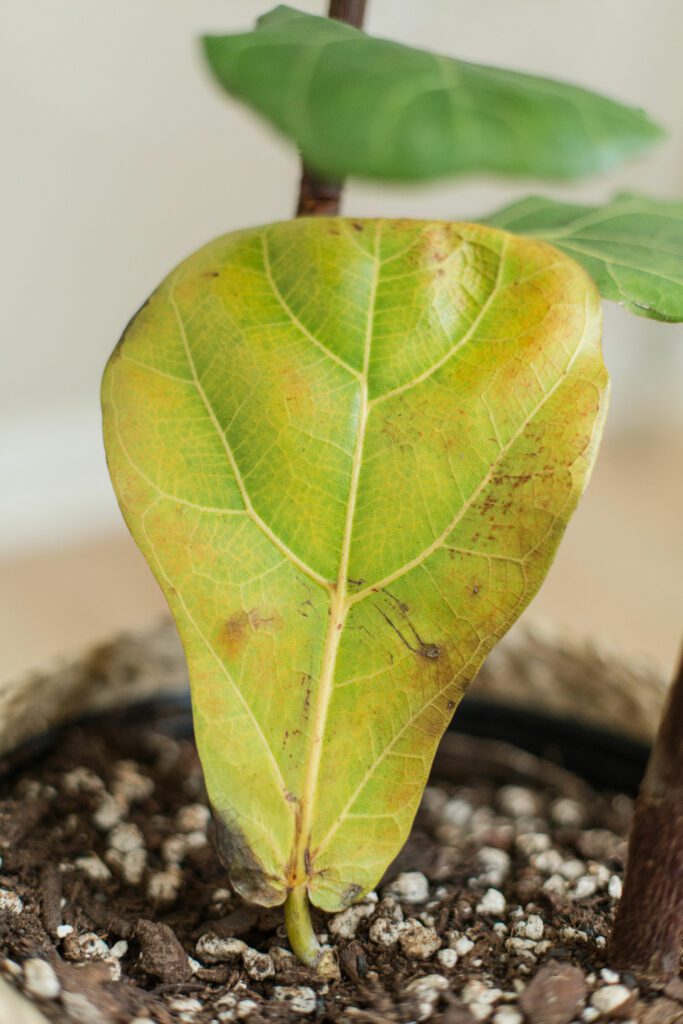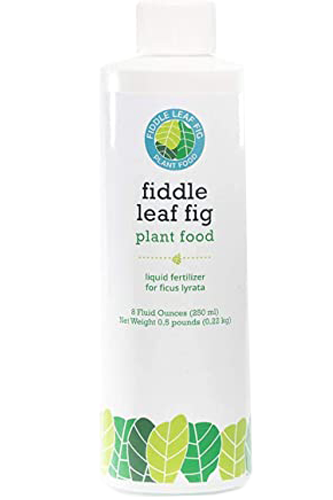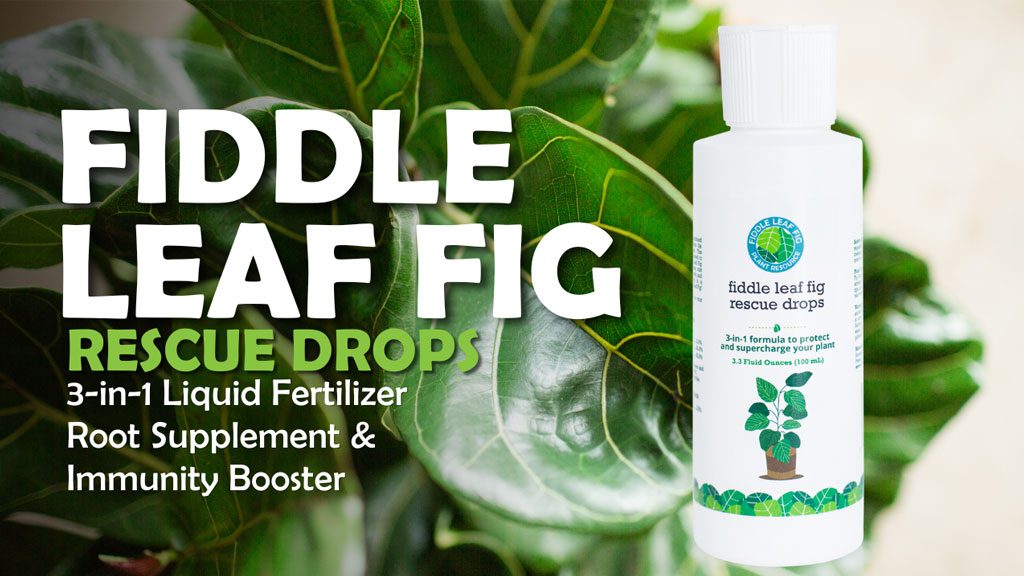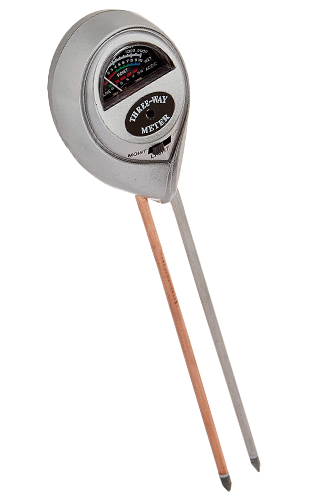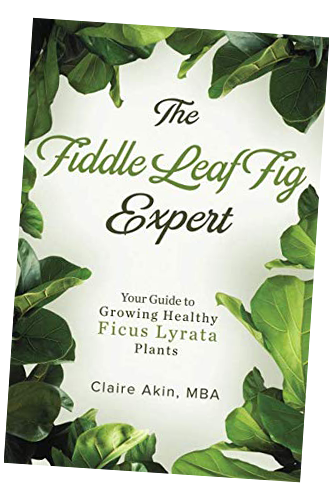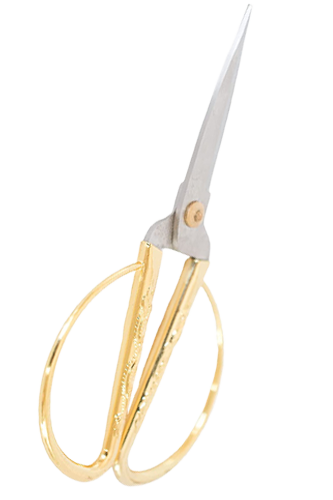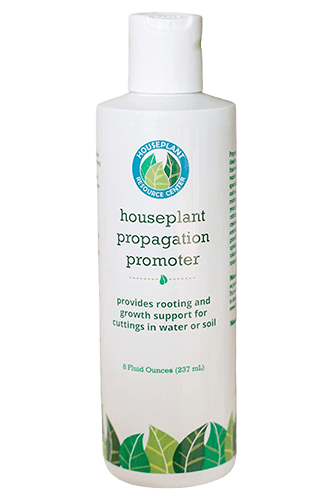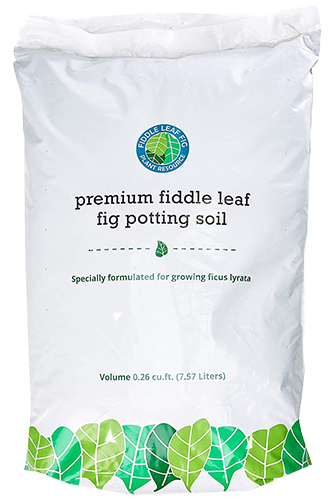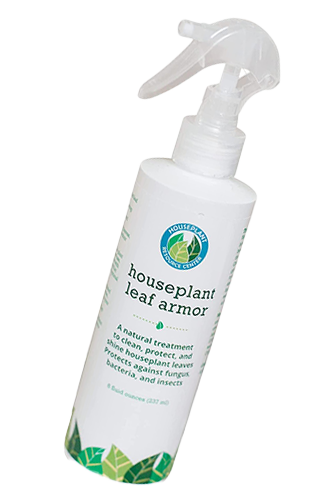One of the most common problems I see with fiddle leaf figs is yellowing leaves.
After all, fiddle leaf figs are famous for their large, beautiful green leaves, so yellowing leaves can really throw off your aesthetic.So what do yellow leaves mean and how can you fix them?
In my experience, yellow fiddle leaf fig leaves usually mean one of two things:
- A lack of light or fertilizer
- A combination of too little light and too much water
The pigment chlorophyll makes the leaves green in the first place, but a plant has to create chlorophyll. To do that, it needs energy and nutrients!
Plants get their energy from sunlight and nutrients present in the soil to produce chlorophyll. (Conversely, chlorophyll helps plants create energy from water, sunlight, and carbon dioxide.)
If your plant isn’t getting the energy or nutrients it needs, you may notice discoloration of the leaves. They may start to lighten between the veins and turn a lighter green before turning bright yellow.
Yellow leaves can also be caused by a insect infestation, or root rot, both of which can lead to leaf drop. If you think your plant has an infestation, treat it immediately with an insecticidal soap, or even neem oil to get rid of the pests. If you think the problem is root rot, try our Root Rot Treatment to save your plant’s root system and stop it from rotting. Additionally, maintain a good watering schedule for your plant and make sure the pot you have your plant in has plenty of drainage holes.

So how do you know whether it needs light or fertilizer?
How to Fix Yellow Fiddle Leaf Fig Leaves
An easy way to determine the cause of your yellowing leaves is simply a process of elimination and making the changes that carry the least risk.
In other words, start with light and regular watering, and then move onto fertilizer if necessary. Once you fix the problem, you should begin seeing new life come to your plant. The current leaves may start turning green again (depending on how bad they were), and you’ll probably get new leaves soon after your plant recovers.
Case Study: Yellow Fiddle Leaf Fig Leaves
Does it need light?
If your fiddle leaf fig doesn’t get much light, fix this before you add fertilizer.
Fiddle leaf figs love light and thrive near a bright window where they can get lots of indirect sunlight. If your plant is too deep in a room, adjust its location so that it gets the best light possible!
You can place it right in a north-facing window (these rarely get indirect sunlight) or near any other window where it won’t be directly in the sun’s rays, but will still get lots of light.

If you don’t have a great place for your fig to get lots of natural light, you might want to invest in some grow lights like these.
Also, make sure to check the soil. If the soil feels wet, you might want to let it dry out a little more between watering. (Use a moisture meter like this one to know just how thirsty your plant is.) Over-watering and not enough light is a bad combination! Read our Ultimate Watering Guide for your fiddle leaf fig here.
Does it need fertilizer?
Most of us remember to water plants and give them good light, but we often forget that plants need nutrients to grow and be healthy! They may get their energy from sunlight, but they need nutrients to support the photosynthesis process. Think of fertilizer like a vitamin supplement for your plants!
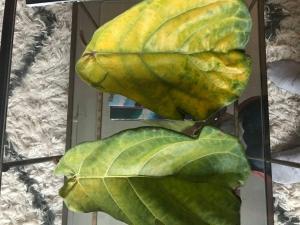
If you’ve determined that your tree is getting the perfect amount of light and water, it might have a nutrient deficiency and need fertilizer. Fiddle leaf figs, and Ficus trees in general, need fertilizer at least every other week during the growing season.
Fiddle leaf figs grow during the spring and summer months, so it’s especially important to fertilize them then. If your plant gets yellow leaves during this time of year, it probably needs more fertilizer, especially if you haven’t noticed any new growth.
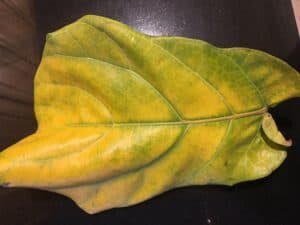
If you haven’t fertilized your fiddle leave fig for a while and it’s getting good light and the perfect amount of water, this is likely your cause. I love Fiddle Leaf Fig Plant Food because it’s gentle enough to use each time you water without harming your plant, so you never have to remember a fertilizing schedule, and you’ll never risk undernourished, yellow leaves again.
Soil Acidity and Yellow Fiddle Leaf Fig Leaves
As soil breaks down, it results in excess acidity. There’s always the tendency for potted soil to become more acidic over time, so you have to work to keep yours alkaline.
Some fiddle leaf fig owners have experimented with adding coffee to their fiddle leaf fig plants. They feel that adding acidity to the soil is beneficial and the nitrogen that coffee contains will act as a fertilizer.
However, adding coffee grounds to your fiddle leaf fig is a risk. Indoors, directly applying coffee grounds to your fiddle leaf fig plant soil can cause excessive moisture retention, fungal overgrowth and impair plant growth.
Without a complete compost and decomposition system, along with rain and full outdoor drainage, the grounds themself will build up and can restrict airflow to the soil, foster gnats, and grow mold.
Fiddle Leaf Fig Acidity Levels
Fiddle leaf fig trees like neutral pH soil conditions. (Slightly acidic or slightly alkaline). If the pH falls out of this range, the fiddle leaf fig may have difficulty absorbing nutrients from the soil.
Brewed coffee has a pH between 5.2 – 6.9, so depending on the coffee, it could be harmful to your fiddle leaf fig.
It’s important to remember, the perfect pH for fiddle leaf fig trees is 6.5 – 7. Anything under 6 will be too acidic. Your plant’s roots will be unable to absorb the nutrients in the soil. Yellow leaves, stunted growth, and an unhappy plant are the general symptoms.
How to Check your Fiddle Leaf Fig Soil Acidity Levels
You should check the pH of your soil at least twice a year.
Use our fiddle leaf fig soil meter to test the moisture, ph and light of your fiddle leaf fig.
If you find the pH of your soil is too high, repot your plant and water normally with a well-balanced fertilizer for a fiddle leaf fig.
If repotting your plant is not possible, you can use Alkaline Water Drops to make a batch of alkaline water and thoroughly water your plant.
To learn more about coffee grounds and your fiddle leaf fig, watch the video below:
Grab the Essentials for Your Fiddle Leaf Fig:
- Premium Fiddle Leaf Fig Potting Soil
- Fiddle Leaf Fig Plant Food
- Root Rot Treatment
- Houseplant Leaf Armor to protect against insects, bacteria, and fungus (As an added bonus, it also cleans and adds shine to your plant’s leaves!)
- Moisture meter to always know when your plant is thirsty.
To learn more:
- To learn more, sign up for our free Fiddle Leaf Fig Care 101 Webinar for advanced fiddle leaf fig care.
- Make sure you’re subscribed to our newsletter.
- Read The Fiddle Leaf Fig Expert, your complete guide to growing healthy fiddle leaf fig plants. The book is available in full-color paperback or Kindle edition on Amazon now!
- Click to join our community on Facebook: Fiddle Leaf Fig Plant Resource Group.

